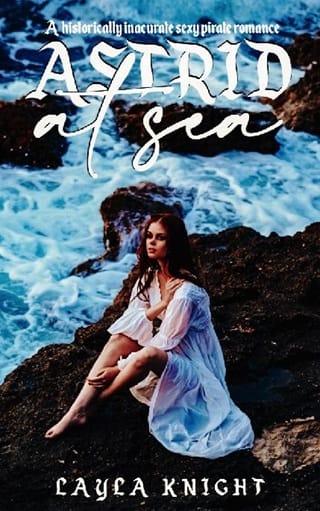22 Geneva Freeport
22 Geneva Freeport
Anna and Ingrid traveled from Zurich to the Costa de Prata to supervise the ritual crating of the six paintings. The works
arrived in Geneva the following Thursday and were cleared into the Freeport early Friday morning. "One of the greatest finds
in living memory," declared Edmond Ricard during a midday phone call to Nicholas Lovegrove in London. The Swiss dealer nevertheless
wanted his experts to give the canvases a thorough going-over before moving forward. Gabriel spent five anxious days in Venice
awaiting their verdict, which was favorable. Ricard set the valuation at an astonishing $325 million, and Lovegrove provided
the dealer with a list of stratospherically expensive artists that were of interest to his client. It did not include the
name Pablo Picasso.
Another forty-eight hours would go by before Ricard, with apologies for the delay, sent Lovegrove a list of paintings for his client's consideration. Included were the Pollock and de Kooning that had been on display in Ricard's gallery, along with works by Gustav Klimt, Mark Rothko, André Derain, Georges Braque, Fernand Léger, Wassily Kandinsky, Andy Warhol, Robert Motherwell, and Cy Twombly. Lovegrove called it a promising start, and three days later he was back in the Geneva Freeport with his client and her assistant in tow. For two hours they roamed the corridors and vaults of the facility, with Gabriel monitoring the proceedings from Venice via Ingrid's phone. Lovegrove's client was on her best behavior, but far from dazzled.
"Is there something specific you're looking for?" asked Ricard when they were back in his office.
"I'll know it when I see it," said Anna.
"The de Kooning would be a fine investment, Madame Rolfe. The Pollock as well. I'm prepared to take your six works in trade
for both canvases and call it a day."
"Put it in writing," interjected Lovegrove. "In the meantime, we'd like to see what else is on the market."
The next viewing took place the following week. It included additional canvases by Pollock and Rothko, yet another de Kooning,
a Basquiat, a Bacon, and a Jasper Johns—none of which Lovegrove's client found to her liking. Frustrated, Ricard suggested
they have a look at one final painting—an extraordinary opportunity, or so he claimed, that had just come onto the market.
It was stored in Building 2, Corridor 4, Vault 39. When Ricard opened the locked metal shipping container, Madame Rolfe drew
a sharp intake of breath. A photograph of the painting, snapped by her assistant, appeared instantly on Gabriel's computer
screen in Venice.
They were getting warmer.
***
The work in question, a streetscape of Barcelona, was painted by Pablo Picasso during the three-year phase of his career that would come to be known as the Blue Period. Ricard expressed surprise at Madame Rolfe's reaction to the painting. He was under the impression, he said, that she had no interest in the Spaniard's work.
"Wherever did you get an idea like that?"
"Your art adviser."
Anna gave Lovegrove a withering look. "An oversight on his part, I assure you."
"There are more than a thousand Picassos stored here at the Freeport," explained Ricard. "I know of at least a hundred that
are currently on the market."
"I'd like to see every one of them."
Ricard showed them three more Picassos after lunch and four others the following Tuesday. Two of the canvases were from the
Rose Period, two were Cubist works painted during the First World War, and two were later works executed by Picasso shortly
before his death. The last canvas they viewed was a surrealist work—a woman seated before a window—painted by Picasso in 1936
while he was living on the rue la Boétie in Paris. Anna told the Swiss art dealer that it was her favorite of the lot.
"The Cubist pieces are quite fine as well," the dealer pointed out.
"But this one is special."
"They are not easy to come by, Madame Rolfe. I know of one other similar work here in the Freeport, but it's unlikely the
owner will agree to part with it."
"Is there any way he might allow us to at least see it?"
"The Freeport is not an art gallery. Collectors keep their paintings here for a reason."
They were back again three days later, but the canvases Ricard showed them were all from the postwar period. They broke for the weekend—Anna and Ingrid spent it in Zermatt, Lovegrove at his weekend home in Tunbridge Wells—and the following Wednesday they viewed fourteen stunning Picassos. None were surrealist works from the thirties, leaving Anna predictably underwhelmed.
"What about the other surrealist canvas you mentioned?" she asked.
"I spoke with the owner's representative last evening."
"And?"
"I'm not sure I can convince him to sell it. But if I can, he will drive an extremely hard bargain."
"I have a gift card worth three hundred and twenty-five million dollars that was left to me by my father. Needless to say,
money is no object."
They were the four most dangerous words to utter in front of an art dealer, especially a dealer who plied his trade inside
the Geneva Freeport. "If you have a few minutes," he said, glancing at his watch, "we can have a look at it now."
"I'd love nothing more," replied Anna.
The painting was stored in a crowded vault in Building 3, Corridor 6. The markings on the metal shipping crate contained no
clue as to the contents—a portrait of a woman, oil on canvas, painted by Picasso in his studio on the rue la Boétie in 1937.
They all four gazed at the painting for a long moment in silence.
"Dimensions?" asked Lovegrove at last, as though it were the least of his concerns.
"Ninety-four by sixty-six centimeters," replied Ricard.
Lovegrove looked at Anna. "What do you think?"
"Give him whatever he wants," she said, and walked out.
***
The negotiations commenced late the following morning after Lovegrove had settled into his office in Cork Street. As promised,
the owner of the Picasso—Ricard claimed not to know his identity, or even whether the owner was an individual or a consortium
of investors—played hard to get.
"He wants the Modigliani, the Van Gogh, the Cézanne, and the Monet."
"For a single Picasso? I'm sure he does," replied Lovegrove. "But he's not going to get them."
"Perhaps you should put the offer to your client before you say no."
"I won't allow her to make a foolish deal, no matter how badly she wants that painting."
Forty-eight hours passed before Lovegrove heard from Ricard again. It seemed the owner of the painting had refused to move
off his opening position. The ball, said Ricard, was on Lovegrove's side of the net.
"The Modigliani and the Van Gogh," he said.
"There's no way he'll go for it."
" Who won't go for it, Monsieur Ricard?"
"The man at the other end of the line. Never mind who he is."
"Put the offer to him. I'll wait to hear from you."
The Swiss dealer waited until five thirty the following afternoon to ring Lovegrove with the response. "The owner still wants
all four paintings, but I think he might do it for the Modigliani, the Van Gogh, and the Cézanne."
"Why wouldn't he? It's the deal of a lifetime."
"Is that a yes, Monsieur Lovegrove?"
He indicated, grudgingly, that it was. By ten o'clock the next morning they had an agreement in principle.
"That leaves the Monet, the Renoir, and the Toulouse-Lautrec," said Ricard. "How does Madame Rolfe wish to spend the balance of her so-called gift card?"
"The Pollock."
"Done."
Lovegrove immediately rang Gabriel with the news. "We have a deal, Allon."
"Yes, I know."
"How?"
Gabriel rang off without answering. Lovegrove, after having a celebratory martini with Sarah Bancroft at Wiltons, walked over
to Regent Street and bought himself a new phone.
 Fullepub
Fullepub 



